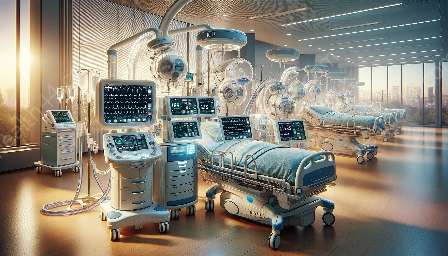Anesthesia machines are crucial medical devices used to administer anesthesia and monitor a patient's vital signs during surgical procedures. These machines play a vital role in life support systems, ensuring the safe and effective delivery of anesthesia and maintaining the patient's well-being. Understanding the technology and functions of anesthesia machines is essential for healthcare professionals to provide optimal care to patients.
The Technology Behind Anesthesia Machines
Modern anesthesia machines are sophisticated devices equipped with advanced technology to deliver various types of anesthesia, such as general, regional, and local anesthesia. These machines consist of several components that work together to ensure the precise and controlled delivery of anesthetic agents. Key components of anesthesia machines include:
- Vaporizers: These devices control the concentration of anesthetic agents delivered to the patient, allowing for accurate dosing.
- Gas Delivery System: Anesthesia machines are designed to mix and deliver a precise mixture of medical gases and anesthetic agents to the patient.
- Monitoring Systems: These systems continuously monitor the patient's vital signs, such as oxygen levels, heart rate, and breathing, providing real-time feedback to the anesthesia provider.
- Ventilator: Some anesthesia machines are equipped with integrated ventilators, which assist with breathing and maintain proper ventilation during anesthesia.
- Touchscreen Interfaces: Many modern anesthesia machines feature user-friendly touchscreen interfaces that enable easy control and customization of anesthesia parameters.
The integration of these components and advanced technology in anesthesia machines ensures the safe, precise, and reliable delivery of anesthesia to patients, contributing to successful surgical outcomes and improved patient safety.
Anesthesia Machines and Life Support Systems
Anesthesia machines are an integral part of life support systems in healthcare settings. During surgical procedures, these machines play a crucial role in maintaining a patient's physiological stability and ensuring their well-being while under anesthesia. The ability of anesthesia machines to provide controlled delivery of anesthetic agents, monitor vital signs, and support ventilation is essential for the successful management of patients requiring anesthesia.
Moreover, anesthesia machines are designed to seamlessly integrate with other life support systems, such as patient monitoring devices, ventilators, and infusion pumps. This integration enables healthcare providers to coordinate and synchronize the delivery of anesthesia with other life support interventions, ensuring comprehensive care and patient safety throughout the perioperative period.
Furthermore, anesthesia machines are equipped with built-in safety features, alarms, and backup systems to safeguard patients in the event of equipment malfunctions or unexpected changes in the patient's condition. By working in tandem with life support systems, anesthesia machines contribute to the overall management of patients undergoing surgical procedures, promoting optimal outcomes and minimizing the risk of complications.
Anesthesia Machines as Essential Medical Devices & Equipment
Within the realm of medical devices and equipment, anesthesia machines hold a prominent position due to their critical role in perioperative care. These devices are essential for anesthesiologists, nurse anesthetists, and other healthcare professionals involved in anesthesia delivery, as they provide a reliable and versatile platform for administering anesthesia to patients across various surgical specialties.
Furthermore, the continuous advancements in anesthesia machine technology have led to the development of more compact, portable, and versatile models, expanding their utility in diverse healthcare settings. From operating rooms and intensive care units to outpatient surgical centers and emergency departments, anesthesia machines are designed to adapt to the specific needs of different clinical environments, enhancing their accessibility and usability.
Additionally, the incorporation of intelligent monitoring systems and electronic health record integration in modern anesthesia machines contributes to the seamless capture and documentation of vital anesthesia-related data, supporting clinical decision-making and quality improvement initiatives within healthcare facilities.
In conclusion, anesthesia machines represent a blend of sophisticated technology, life support integration, and essential medical equipment, with their pivotal role in anesthesia delivery and patient care making them indispensable assets in healthcare settings. By understanding the technology and functions of anesthesia machines, healthcare professionals can optimize their use, ensuring the safe and efficient delivery of anesthesia and contributing to positive patient outcomes.


